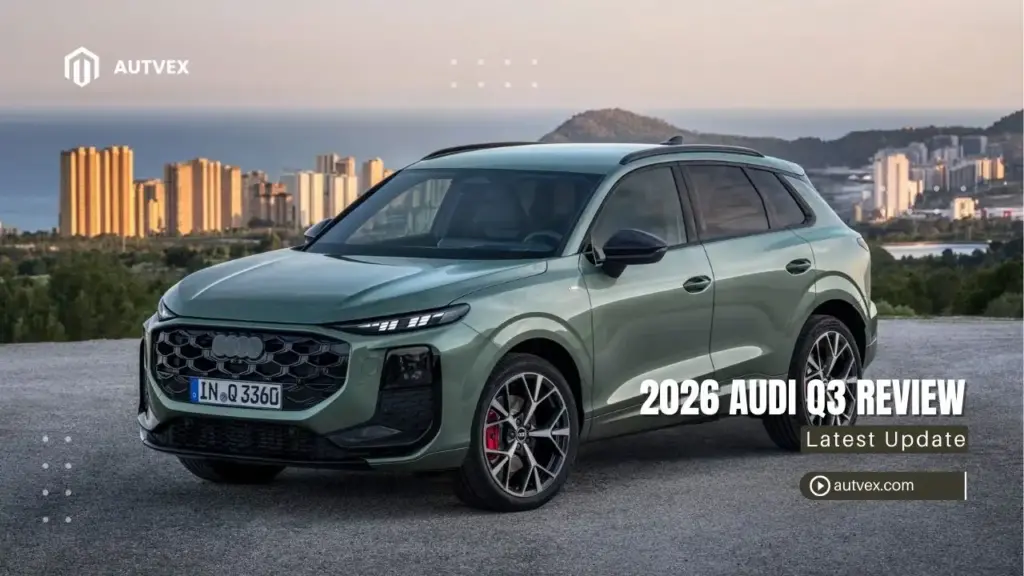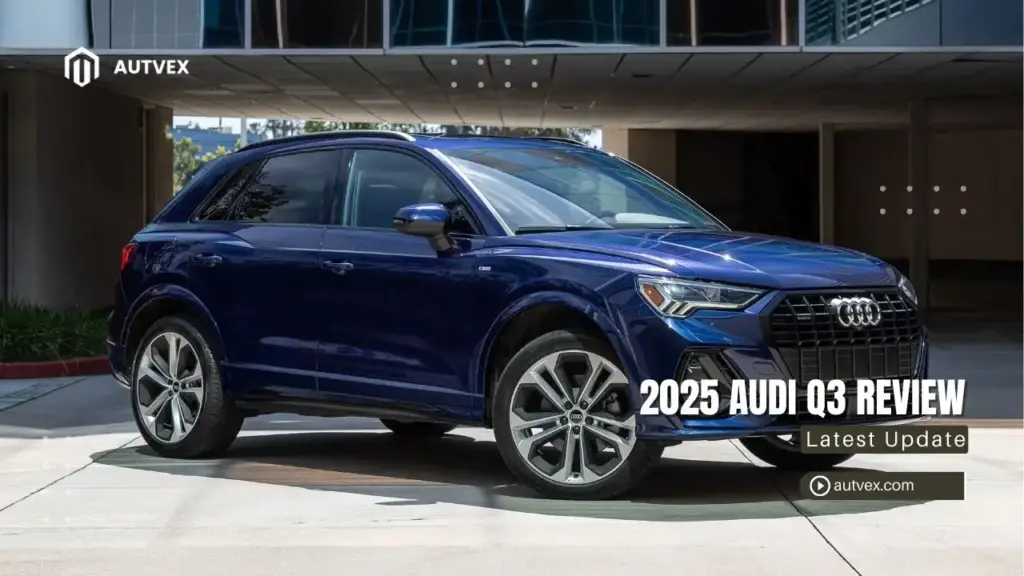You may also like:
The 2026 Audi Q3 arrives as a completely redesigned third-generation model featuring a revolutionary Digital Stage interior with 11.9-inch and 12.8-inch curved displays, 255 horsepower US-spec engine achieving 0-60 mph in 5.5 seconds, and an expected starting price around $42,000. This all-new Q3 sets new benchmarks for entry-level luxury SUVs with split LED headlights, column-mounted gear shifter, and Android-based infotainment, though US buyers will miss out on the plug-in hybrid options available in global markets.
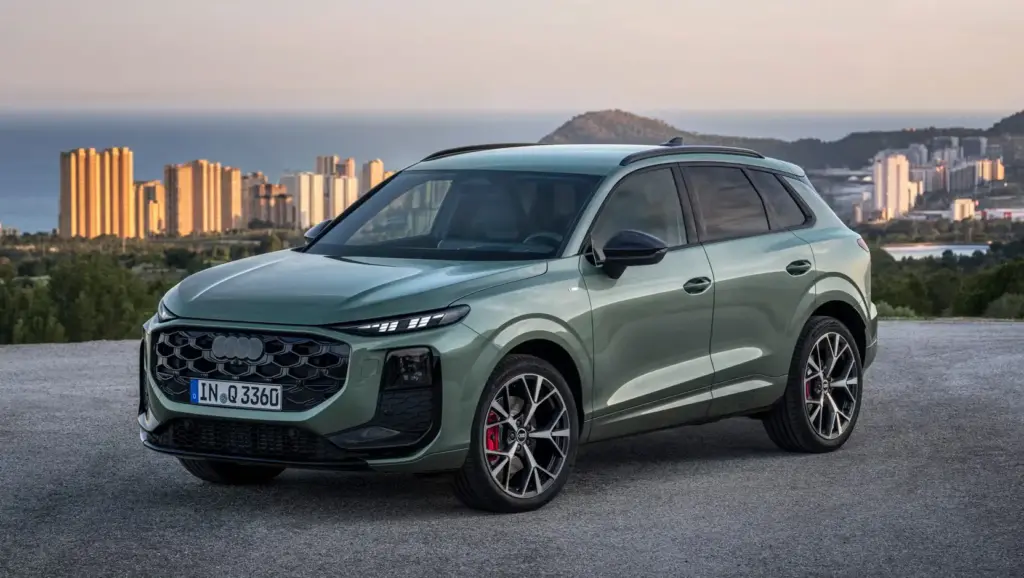
All-New 2026 Audi Q3 Third Generation Redesign Overview
2026 Q3 New Body Style and Split Headlights
The third-generation Q3 adopts Audi’s latest design language with a dramatically bolder appearance. The split headlight configuration separates the main beams in the lower section from the daytime running lights above, creating a distinctive two-tier lighting signature[1]. This design mirrors the larger Q6 e-tron’s aggressive stance while maintaining the Q3’s compact proportions.
The wider, flatter Singleframe grille dominates the front fascia, giving the Q3 more road presence than ever before[2]. Optional Digital Matrix LED headlights utilize 25,600 micro-LEDs to provide high-resolution light projection with adaptive lane guidance and multiple selectable light signatures.
2026 Audi Q3 vs 2025 Audi Q3 Changes
The transformation from 2025 to 2026 represents a complete generational change rather than a simple refresh. While the 2025 model represented the final year of the second generation that debuted in 2019, the 2026 brings entirely new architecture, powertrains, and technology[3].
According to Autvex automotive experts, this represents one of the most comprehensive redesigns in the compact luxury SUV segment. The outgoing model’s 228 hp engine gives way to a more powerful 255 hp unit for US markets, while the interior technology leap is even more dramatic.
MQB Evo Platform Architecture
Built on Volkswagen Group’s latest MQB Evo platform, the 2026 Q3 benefits from improved structural rigidity and weight distribution. The new architecture enables the integration of advanced driver assistance systems and the sophisticated Digital Stage cockpit while maintaining the Q3’s reputation for agility[1].
The platform also accommodates the European market’s plug-in hybrid system, though this won’t reach American shores. This flexible architecture allows Audi to share development costs with vehicles like the upcoming VW Tiguan, ensuring competitive pricing despite the significant technology upgrades.
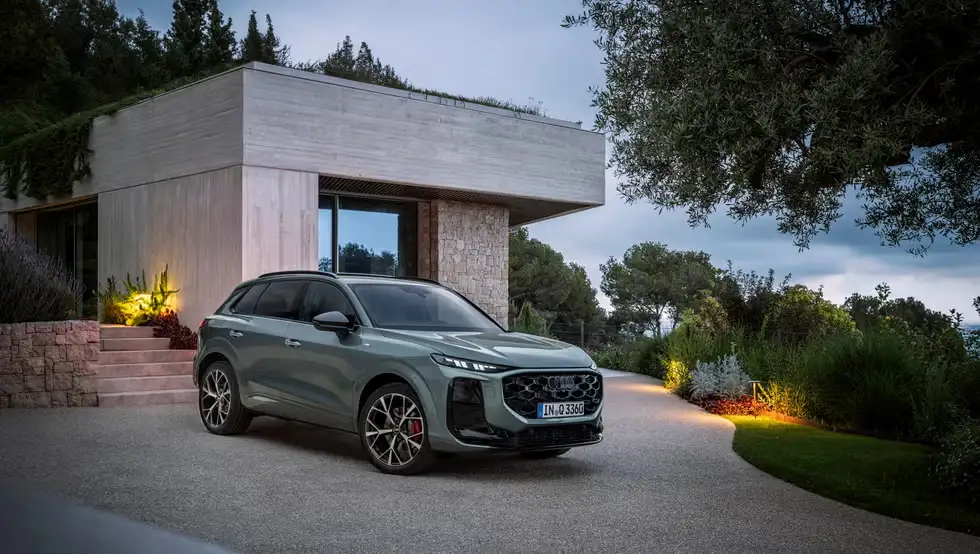
2026 Audi Q3 Interior – The Digital Stage Revolution
New 11.9-inch & 12.8-inch Curved Display System
The centerpiece of the new interior is Audi’s Digital Stage, featuring a panoramic curved display that combines an 11.9-inch digital instrument cluster with a 12.8-inch MMI touchscreen[1]. This slightly curved panel angles toward the driver, creating an immersive cockpit experience that rivals vehicles costing twice as much.
The displays run on Android Automotive OS, enabling native integration of third-party apps like YouTube without requiring smartphone connection[1]. This represents a significant departure from previous Audi infotainment systems that relied heavily on smartphone mirroring for advanced features.
Column Shifter and New Steering Wheel Stalk Controls
One of the most radical changes involves relocating the gear selector to a steering column stalk, freeing up valuable center console space[4]. This new stalk also incorporates turn signal and windshield wiper controls, consolidating multiple functions into a single, intuitive interface.
The freed console space now accommodates two deep cup holders, a cooled wireless charging pad delivering 15 watts of power, and additional storage compartments[4]. This practical improvement addresses one of the outgoing model’s main criticisms: limited interior storage.
Android-Based Operating System Features
The Android Automotive OS brings unprecedented connectivity to the Q3. Unlike traditional Apple CarPlay or Android Auto that mirror phone content, this native system runs apps directly on the vehicle’s hardware[1].
AI-enhanced voice recognition understands natural speech patterns, eliminating the need for specific command phrases. The system learns driver preferences over time, suggesting routes, climate settings, and media based on patterns and schedules.
Acoustic Laminated Windows and Sonos Sound System
Available acoustic laminated glass significantly reduces road and wind noise, creating a serene cabin environment typically found in larger luxury vehicles[1]. This option proves especially valuable for highway cruising where the compact SUV segment often struggles with noise isolation.
The optional 420-watt Sonos sound system features 12 speakers including a center channel and subwoofer[5]. Four preconfigured sound profiles (neutral, concert, lounge, and podcast) optimize audio for different content types. The system’s virtually generated surround sound creates an immersive listening experience that punches above the Q3’s compact class.
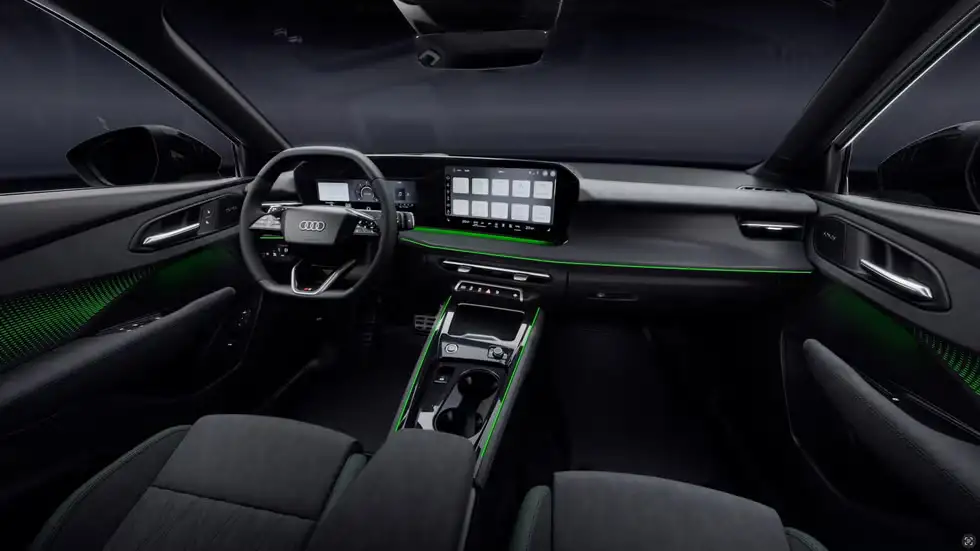
Performance and Specifications – US Market
2026 Audi Q3 255 Horsepower 2.0L 4-Cylinder Engine
The US-spec Q3 features a turbocharged 2.0-liter four-cylinder engine producing 255 horsepower and 273 pound-feet of torque[1]. This represents a substantial 27 hp increase over the outgoing model’s 228 hp, addressing critics who found the previous generation underpowered for American highways.
The engine benefits from updated turbocharger technology and refined direct injection, improving both performance and efficiency. While specific fuel economy figures await EPA certification, Audi claims improvements over the outgoing model’s 25 mpg city/33 mpg highway ratings.
7-Speed Dual-Clutch Transmission Upgrade
Replacing the previous 8-speed automatic, the new 7-speed S tronic dual-clutch transmission delivers quicker shifts and improved acceleration[1]. This transmission choice aligns the Q3 with sportier offerings in Audi’s lineup, providing near-instantaneous gear changes that enhance both performance and driving engagement.
The dual-clutch design eliminates the torque converter found in traditional automatics, reducing power losses and improving responsiveness. Drivers can choose between fully automatic operation or manual control via steering wheel paddles.
0-60 Time of 5.5 Seconds
Audi estimates the 2026 Q3 will sprint from 0-60 mph in 5.5 seconds, a significant improvement over the outgoing model’s 7.8-second time[1]. This performance places the Q3 among the quickest non-performance compact SUVs available, rivaling some sport-oriented competitors.
Real-world testing by automotive journalists will verify these claims, but the combination of increased power and the quick-shifting dual-clutch transmission suggests Audi’s estimates are achievable. For context, the BMW X1 xDrive28i manages the same sprint in 6.2 seconds.
Standard All-Wheel Drive Quattro System
Every US-market Q3 includes Audi’s legendary quattro all-wheel drive as standard equipment[6]. The latest generation uses a more efficient coupling system that can send up to 100% of torque to either axle when needed, improving both traction and fuel economy.
The system operates primarily in front-wheel drive during normal conditions to maximize efficiency, engaging the rear wheels milliseconds before slip occurs. This proactive approach provides confidence in adverse weather without the fuel economy penalty of permanent all-wheel drive.
Adaptive Dampers as New Option
The available adaptive suspension system represents a first for the Q3, allowing drivers to adjust ride quality based on preference or conditions[2]. The system continuously monitors road conditions and driving inputs, adjusting damper firmness up to 1,000 times per second.
Integrated with Audi Drive Select, the adaptive dampers offer distinct characteristics in Comfort, Auto, Dynamic, and Individual modes. This technology, previously reserved for larger Audi models, elevates the Q3’s dynamic capabilities significantly.
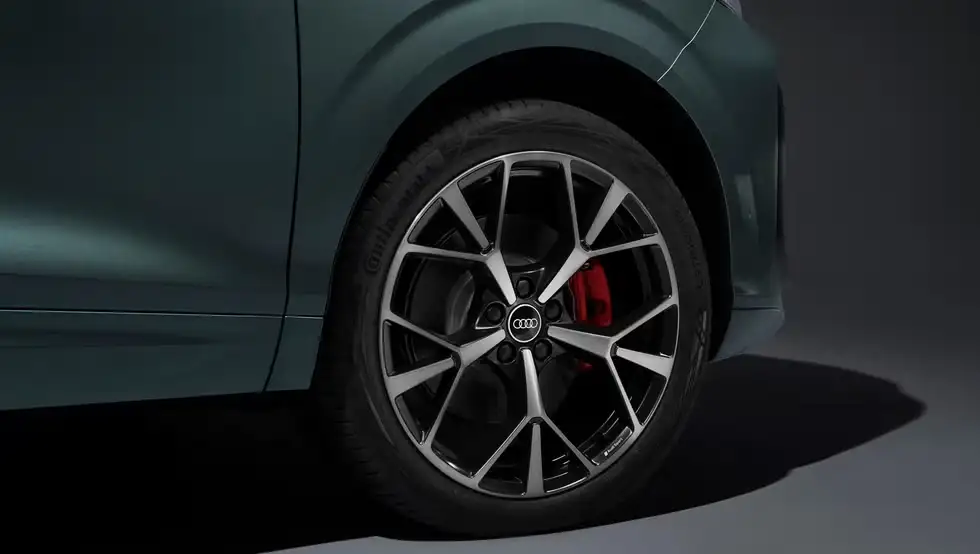
Will the 2026 Q3 PHEV Come to the US?
Global PHEV e-Hybrid Options Not for US Market
While global markets receive a sophisticated plug-in hybrid variant, Audi has confirmed the PHEV won’t reach American shores[7]. This decision reflects US buyer preferences for either traditional gasoline powertrains or full electric vehicles, with plug-in hybrids occupying a shrinking middle ground.
The global PHEV combines a 1.5-liter turbocharged engine with an electric motor to produce 268 combined horsepower[8]. Despite slightly higher output than the US gas model, Audi believes American buyers prefer the simplicity and proven reliability of the 2.0-liter turbo.
PHEV EV Range of 119 km (Europe Only)
European Q3 PHEV models achieve up to 119 kilometers (74 miles) of pure electric range, sufficient for most daily commutes without using gasoline[8]. This impressive range comes from a larger battery pack than most plug-in competitors, though it does reduce cargo space slightly.
The PHEV system enables combined fuel consumption of just 6.0 L/100 km (approximately 39 mpg) in mixed driving[7]. For European buyers facing stringent emissions regulations and high fuel costs, this efficiency proves compelling.
Why US Gets Traditional Gas Engine Only
Autvex market analysis reveals several factors behind Audi’s US powertrain strategy. American buyers typically drive longer distances than Europeans, reducing PHEV efficiency advantages. Additionally, inconsistent charging infrastructure outside major cities limits plug-in hybrid appeal.
The complexity and cost of certifying PHEV systems for US emissions standards, combined with limited demand, makes the business case challenging. Audi instead focuses on offering full electric models like the Q4 e-tron for environmentally conscious buyers.
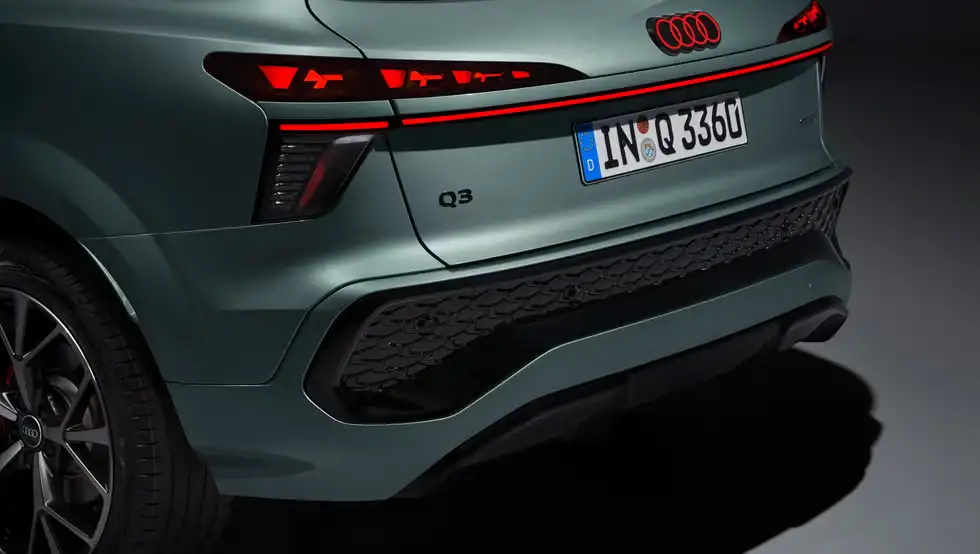
Design and Exterior Updates
Wider Singleframe Grille Design
The new Q3’s face features Audi’s widest interpretation of the Singleframe grille to date for this size class[2]. The honeycomb mesh pattern creates visual depth while improving aerodynamics, contributing to reduced wind noise and improved efficiency.
Chrome accents frame the grille on Premium models, while S line variants receive gloss black treatment for a sportier appearance. The grille’s integration with the split headlights creates a cohesive front-end design that photographs dramatically from any angle.
Digital Matrix LED Headlights with 25,600 Micro-LEDs
The available Digital Matrix LED technology represents a quantum leap in lighting capability. Each headlight contains 25,600 individually controlled micro-LEDs that can create precise light patterns[1]. The system can project warning symbols onto the road surface and create a light carpet for lane guidance.
These intelligent headlights automatically adjust beam patterns to avoid blinding oncoming traffic while maintaining maximum illumination elsewhere. Multiple customizable light signatures allow owners to personalize their vehicle’s appearance both day and night.
New Dimensions – 178 Inches Length
At approximately 178 inches long, the 2026 Q3 grows slightly compared to its predecessor while remaining manageable in urban environments[1]. The increased length primarily benefits rear passenger space and cargo capacity, addressing two common criticisms of the outgoing model.
Width increases marginally to improve interior roominess and stance, while height remains similar to maintain the SUV’s sporty proportions. The longer wheelbase contributes to improved ride quality and highway stability without compromising the Q3’s parking-friendly footprint.
Digital OLED Taillights with Customizable Signatures
Following the headlights’ lead, optional digital OLED taillights offer multiple selectable signatures that owners can customize through the MMI system[1]. A full-width LED light strip connects the taillights, creating a distinctive nighttime presence that’s becoming an Audi signature.
The OLED technology enables unique animations when locking and unlocking the vehicle, adding a premium touch to everyday interactions. Different brightness levels and patterns can communicate various vehicle states to following traffic.
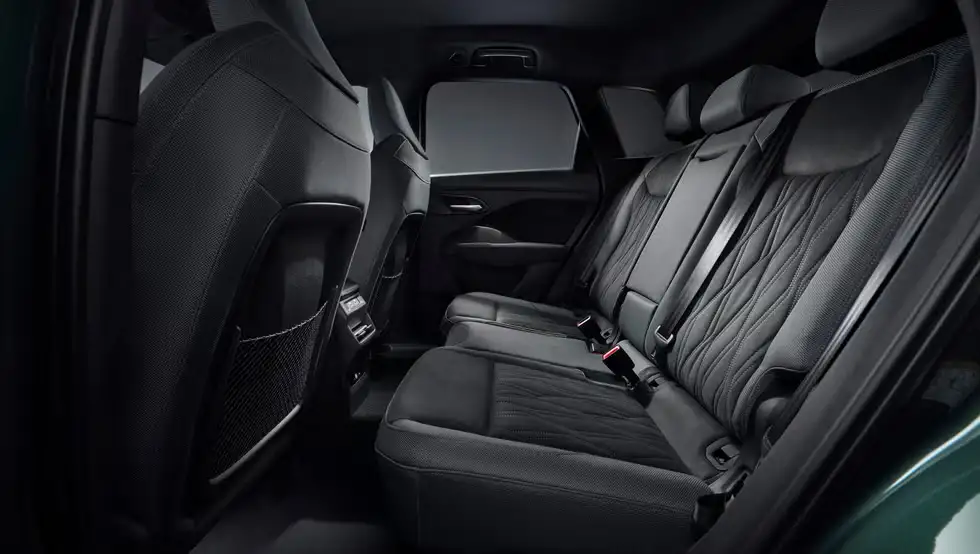
2026 Audi Q3 Price and Release Date
Expected MSRP Starting Around $42,000
Industry analysts project the 2026 Q3 will start around $42,000, positioning it competitively within the entry-luxury segment[9]. This represents a modest increase from the 2025 model’s $40,250 base price, reasonable given the extensive technology and performance improvements.
Edmunds estimates suggest well-equipped models will reach $50,000-$55,000 with popular options like the Digital Matrix headlights, panoramic sunroof, and Sonos audio system[9]. Even at these prices, the Q3 offers strong value considering its advanced technology.
2026 Release Date Timeline for US Market
The 2026 Q3 is expected to arrive at US dealerships in fall 2025, with some sources suggesting early 2026 availability[9]. European deliveries typically begin several months earlier, allowing Audi to address any early production issues before US launch.
Pre-orders may open as early as summer 2025, though Audi hasn’t confirmed specific dates. Interested buyers should contact their local dealers to join waiting lists, as initial availability may be limited.
Is the 2026 Audi Q3 Worth the Wait?
For buyers not under immediate pressure to purchase, waiting for the 2026 model makes compelling sense. The technology leap alone justifies patience, with the Digital Stage interior representing a generational advance over the current model’s already-capable infotainment.
Performance improvements and the fresh design further strengthen the case for waiting. However, those needing immediate transportation should explore attractive incentives on remaining 2025 models, which remain competent luxury SUVs despite being overshadowed by the incoming generation.
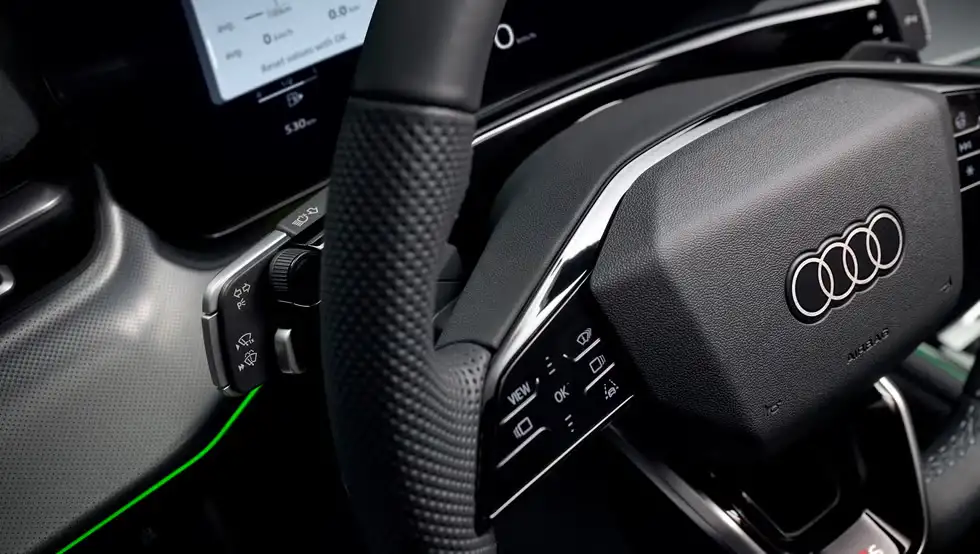
2026 Audi Q3 vs Competition
2026 Audi Q3 vs 2026 BMW X1
| Feature | 2026 Audi Q3 | 2026 BMW X1 |
|---|---|---|
| Starting Price | ~$42,000 | $41,000 |
| Horsepower | 255 hp | 241 hp |
| 0-60 mph | 5.5 seconds | 6.2 seconds |
| Interior Tech | Digital Stage dual screens | Single curved display |
| Cargo Space | 20 cu ft | 25.7 cu ft |
The Q3 offers superior performance and more advanced interior technology, while the X1 provides greater cargo capacity and BMW’s renowned driving dynamics[1].
2026 Audi Q3 vs 2026 Mercedes-Benz GLA
Against the Mercedes GLA 250, the Q3’s 255 hp edges out the GLA’s 221 hp significantly. The Audi’s Digital Stage interior also appears more modern than Mercedes’ MBUX system, though the GLA counters with superior voice recognition and augmented reality navigation.
Pricing favors the Q3 slightly, with the GLA typically commanding a $2,000-$3,000 premium for similarly equipped models. However, Mercedes offers more powerful AMG variants for buyers seeking maximum performance.
2026 Audi Q3 vs 2025 VW Tiguan
The Tiguan shares the Q3’s MQB Evo platform but targets a different buyer[10]. While offering similar space and practicality for roughly $10,000 less, the Tiguan lacks the Q3’s luxury appointments, advanced technology, and performance.
For value-conscious buyers, the Tiguan represents an interesting alternative. However, those prioritizing technology, materials quality, and brand prestige will find the Q3’s premium justified.
2026 Audi Q3 vs 2026 Cupra Terramar
This Spanish cousin, also built on MQB Evo, offers similar performance with more aggressive styling[10]. The Terramar’s lower price point attracts younger buyers, though limited dealer networks in the US restrict availability.
The Q3’s superior technology, established dealer support, and stronger resale values make it the safer choice for most American buyers. Visit Autvex for detailed comparisons between these platform siblings.
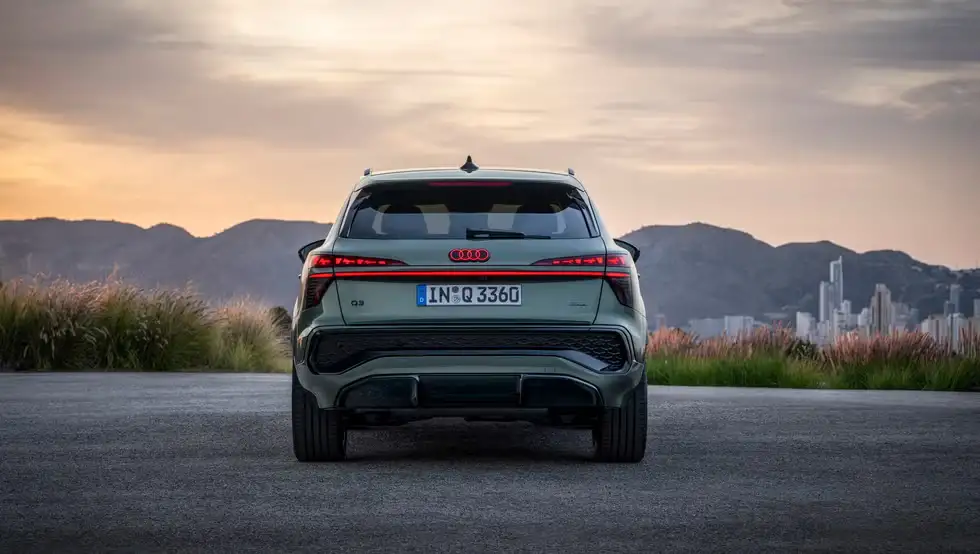
Will Performance Variants Come to the US?
2026 Audi Q3 Sportback Uncertain for US
While Europe receives a sleeker Sportback variant with a coupe-like roofline, US availability remains unconfirmed[2]. The Sportback sacrifices minimal rear headroom and cargo space for enhanced style, appealing to fashion-conscious buyers.
Historical sales data shows limited American appetite for such variants in this size class. Audi will likely gauge standard Q3 sales before committing to Sportback availability.
2026 Audi SQ3 Not Confirmed
Performance enthusiasts hoping for an SQ3 with 300+ horsepower must wait for official confirmation. While platform-mate VW Golf R demonstrates the architecture’s capability to handle such power, Audi hasn’t announced plans for a performance Q3 variant.
The current 255 hp output may satisfy most buyers, but competition from the BMW X1 M35i and Mercedes-AMG GLA 35 suggests an SQ3 would find buyers. According to Audi’s performance hierarchy, an SQ3 would logically slot between the standard Q3 and larger SQ5.
2026 Audi RS Q3 Not Confirmed
An even hotter RS Q3 remains purely speculative at this point. The previous generation offered an RS variant in Europe with 400 hp, but it never reached American shores due to limited demand projections.
The business case for an RS Q3 in the US remains challenging, with buyers in this performance bracket typically preferring larger vehicles or dedicated sports cars. However, strong Q3 sales could potentially justify limited RS availability.
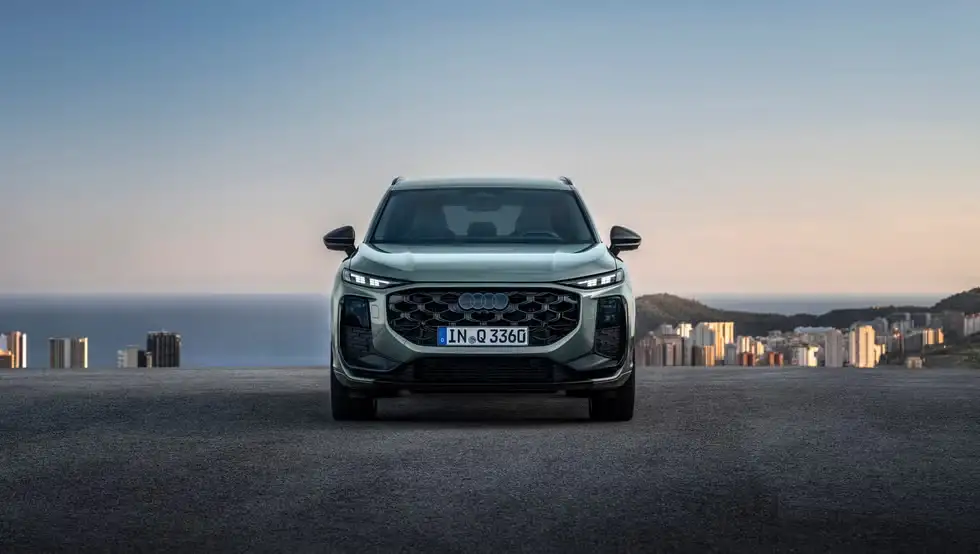
Key Takeaways
- All-new third generation brings complete redesign inside and out
- Digital Stage interior features 11.9″ and 12.8″ curved displays
- 255 hp engine achieves 0-60 mph in 5.5 seconds
- Column-mounted shifter frees up interior space
- $42,000 starting price positions Q3 competitively
- No PHEV for US market despite global availability
- Fall 2025 arrival expected at dealerships
Next Steps
Research current 2025 Q3 incentives if you need immediate purchase, or wait for 2026 model’s arrival later in the year for significant technology and performance improvements. Visit Audi dealers for updates on pre-orders and compare directly with BMW X1 and Mercedes GLA to determine best value. Consider your technology priorities carefully—if the Digital Stage interior appeals strongly, waiting for the 2026 proves worthwhile. For those prioritizing immediate availability and potential deals, explore remaining 2025 inventory at local dealerships where significant incentives may offset the older technology.
FAQs
Is the 2026 Audi Q3 a new redesign?
Yes, it’s an all-new third-generation model replacing the 2019-2025 design with completely new interior, exterior, and powertrain.
What is new for the 2026 Audi Q3?
New Digital Stage interior with curved displays, column shifter, 255 hp engine for US, split headlights, and Android-based infotainment.
How much horsepower does the 2026 Q3 have?
The US-spec model has 255 horsepower from a 2.0L turbocharged 4-cylinder engine, up from 228 hp.
Will the 2026 Audi Q3 have a plug-in hybrid (PHEV)?
Not in the US market. PHEV options are available in Europe but won’t come to America.
What is the interior like on the 2026 Q3?
Features curved 11.9-inch and 12.8-inch displays, column-mounted gear shifter, and premium materials including recycled fabrics.
What is the “Digital Stage” in the 2026 Q3?
Audi’s new cockpit design combining digital instrument cluster and central touchscreen in one curved panoramic display unit.
When is the 2026 Audi Q3 release date?
Expected to arrive in US dealerships sometime in 2026, specific timing not yet announced.
What is the price of the 2026 Audi Q3?
Estimated starting MSRP around $42,000, final pricing to be confirmed closer to launch.
Should I buy a 2025 Q3 or wait for the 2026 Q3?
Wait for 2026 if you value latest technology and performance; buy 2025 for immediate availability and potential incentives.
How does the 2026 Q3 compare to the 2026 BMW X1?
Both offer similar size and luxury, but Q3 has more advanced interior tech while X1 may offer better driving dynamics.
Will the 2026 Q3 Sportback come to the US?
Uncertain at this time; Sportback variant shown globally but US availability not confirmed.
References
- Car and Driver. (2025). 2026 Audi Q3 Review, Pricing, and Specs. https://www.caranddriver.com/audi/q3
- MotorTrend. (2025). Driven: The 2026 Audi Q3 Solidly Raises the Luxury Bar. https://www.motortrend.com/reviews/2026-audi-q3-first-drive
- Audi Media Center. (2025). Versatile, sporty, and digitally connected: the new Audi Q3. https://www.audi-mediacenter.com/en/2026-audi-q3
- YouTube – DPCcars. (2025). New 2026 Audi Q3 Interior is Smarter Than You Think. https://www.youtube.com/watch
- Audi UK. (2025). Q3 SUV Highlights. https://www.audi.co.uk/models/q3
- CarDekho. (2025). Audi Q3 2026 Specifications. https://www.cardekho.com/audi/q3-2026/specs
- Audi St-Laurent. (2025). 2026 Audi Q3: What we Know so Far. https://audistlaurent.ca/2026-audi-q3
- Audi Blainville Blog. (2025). 2026 Audi Q3: Price and Technical Specifications. https://blog.audiblainville.com/2026-audi-q3
- Edmunds. (2025). 2026 Audi Q3 Prices, Reviews, and Pictures. https://www.edmunds.com/audi/q3/2026
- TopElectricSUV. (2025). First Look Review: 2026 Audi Q3 amps up with sharp looks. https://www.topelectricsuv.com/news/audi/2026-q3-review

I am a senior automotive analyst at Autvex. Expert vehicle evaluations, in-depth reviews, and objective analysis helping readers make informed automotive decisions with years of industry experience.

